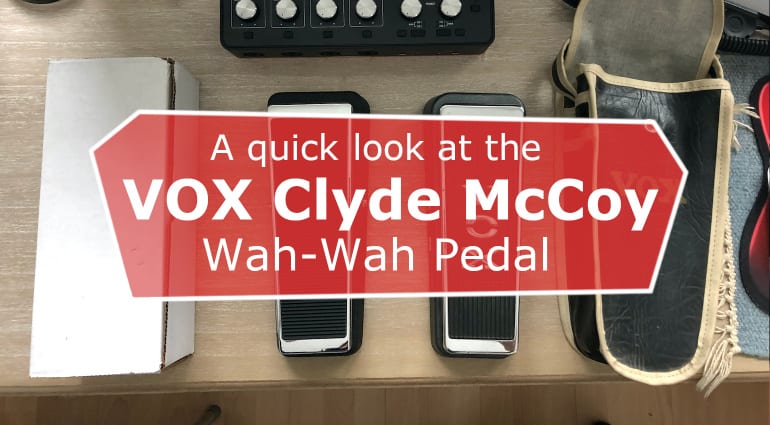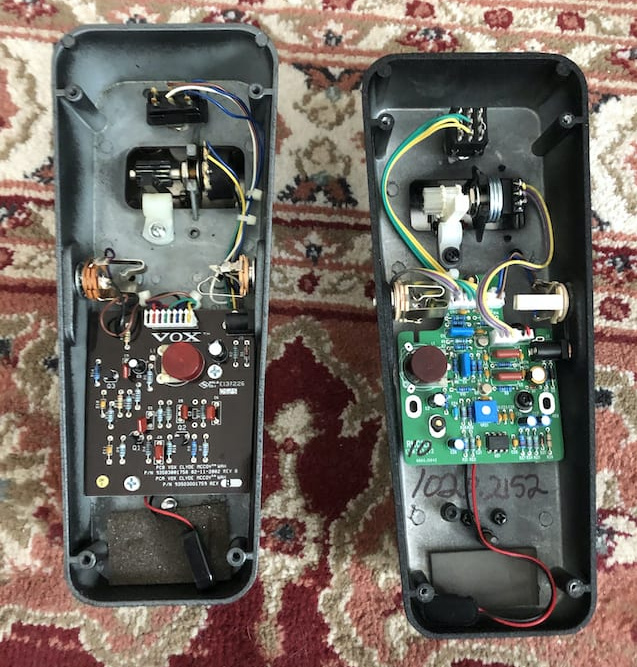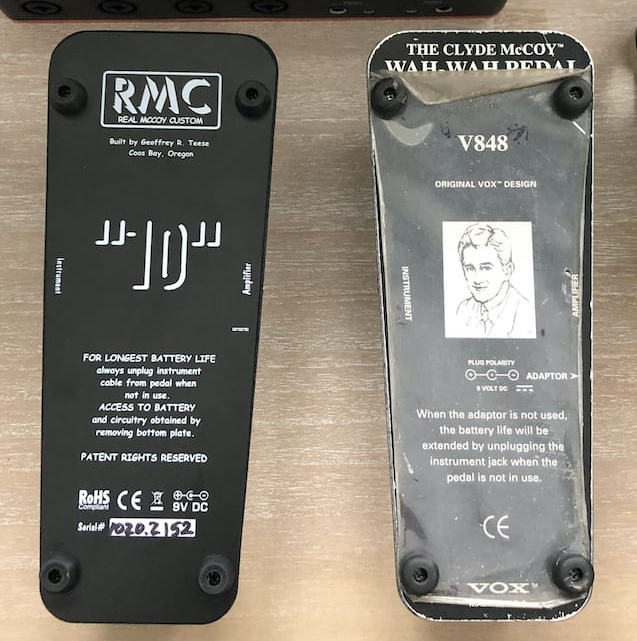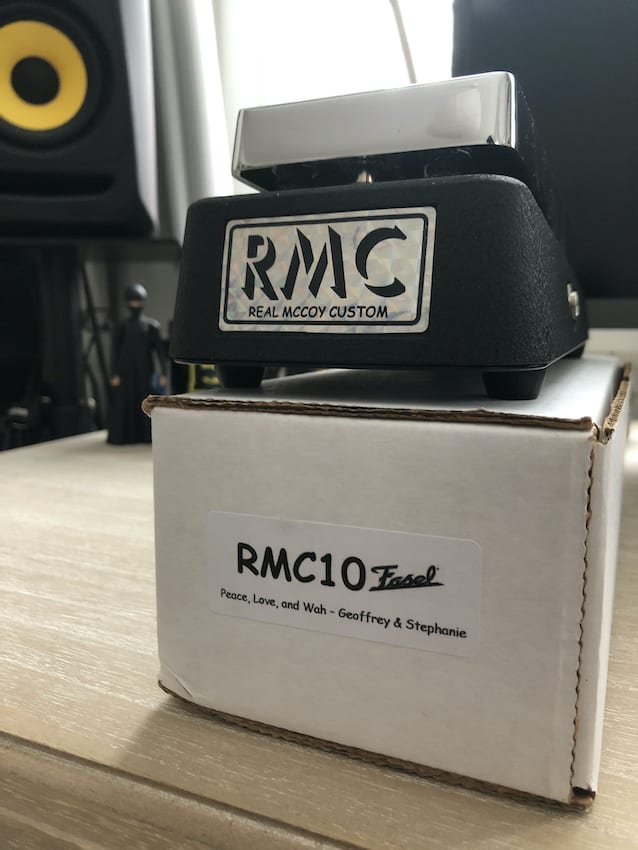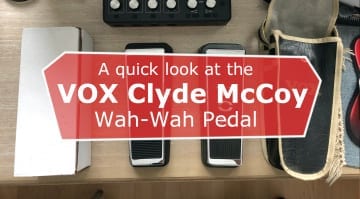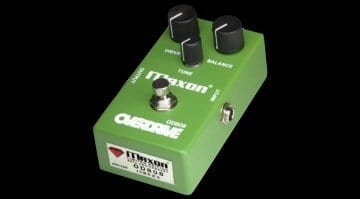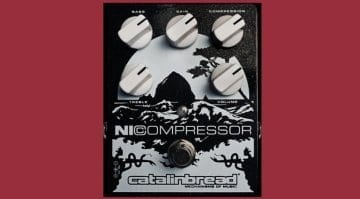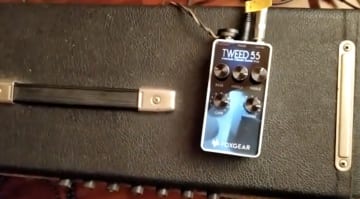The VOX Clyde McCoy Wah: A classic wah pedal and its history
It goes "wah wah"
The wah pedal can be found everywhere. From soul music to heavy metal, and everything in between. Not bad for a simple little circuit designed more than half a century ago. Today we take a brief look at the journey of this particular effect, and its connection with Clyde McCoy.
The journey of a thousand tones begins with a single Pedal
The wah is the first pedal I bought. The first pedal I actually owned though, was a DOD ‘Grunge’ pedal. The guy I got my first guitar from threw it in for free. That’s what he thought of it. And maybe I didn’t know what to do with it, because to me it was just a noise pedal. If you wanted to turn your electric guitar sound into white noise, this was your guy.
But the first pedal I actually bought was the wah. I’d just upgraded from a Danelectro 56 U2 to a Fender ‘62 AVRI Stratocaster, and thought it was time to add a pedal to my signal chain. I was already able to get some dirt from my Fender Blues Junior, and the amp also had reverb. Which was broken. But I didn’t really miss it. Although I do admit, it sounded good when it worked.
Try (seven or more) before you buy
A friend wanted to get a Fender Champion 600 amp and I went with him to the store to check it out. They had a variety of wahs there, and I thought I’d try out a couple, and see if I fancy something. I politely asked the guy behind the counter if he’d allow me to try one or two wahs out, and he was super nice. He suggested I lay a bunch of them out in series and try them out with similar gear to mine, i.e. a 62 AVRI Strat and a Blues Junior. He got seven wahs out for me to try, ranging in different price points. Unfortunately, I couldn’t tell you all the pedals I tried that day. A Crybaby From Hell was definitely there. There were the standard Dunlop CryBaby and VOX wahs. And there was another VOX with a picture of a certain Clyde McCoy on the back.
So while my friend tested the amp, I went through the handful of wah tunes I knew on each wah. I honestly didn’t think they’d be so different, but they were. Each had its own unique flavour/character and sweep. But the Clyde McCoy was my favourite. It had a nice sweep range, it felt very symbiotic. And it had a nice snarl. I had no idea who he was, but he sure knew a thing or two about wah pedals. The pedal cost as much as the amp! But it just sounded and felt that much better to me, and so I brought it home with me.
VOX Clyde McCoy
Who was Clyde McCoy? Turns out, Clyde McCoy was a trumpeter famous for using his Harmon trumpet mute in a “wah-wah” fashion. The then president of the Thomas Organ Company (where the first wah was invented), Joe Benaron, thought the pedal sounded like McCoy’s trumpet, and could be marketed as a tool for brass instruments. He gave Clyde a call, asked him if he could use his name on the pedal, and that’s about all there is to that connection.
These early Clyde McCoy models did not have a red Fasel inductor. The original wahs had halo-style inductors, initially the “large-hole” 30 ohm, and later the 80 ohm “small-hole” version. Other VOX examples might have used fasel inductors, but not the ones branded Clyde McCoy. This isn’t to say that one form of inductor is better or worse, it just happens to give the wah its distinctive character, and ‘growl’.
Possibilities
The thing about the wah is, it’s not just a ‘waka-waka’ device. It’s more than a one-trick pony. Instead of constantly rocking the pedal, you can leave it at a certain spot for a ‘cocked tone’ sound. Or, like many players, find the sweet spot that gives the notes that nuanced, almost-human sound. There’s the rhythmic applications, by muting the strings. And, of course, the famous cry baby wah sound, that gives the notes a vocal quality. Some players even use two wahs together, for further tone manipulation.
I could even cheat a phaser (I know, I know, blasphemous… I had just the one pedal and I was trying to get the most out of it). Also, I found that once engaged, on the higher frequencies, it felt like it gave the amp just a little extra push. Nice and dirty, and chop your head right off.
Tales of Brave Ulysses
After decades of use, maybe there can be such a thing as too much wah. Just ask Kirk Hammett about all the backlash he’s got. But back in 1966, when a young engineer, Brad Plunkett invented the wah, there wasn’t anything quite like it. This was still in the early days of amplified and electrified musical instruments.
The wah’s major breakthrough likely came in 1967, when Eric Clapton plugged into one for Cream’s groundbreaking track Tales of Brave Ulysses. It may not have been the first recording to feature the pedal, but it certainly set it off into the stratosphere, and into the collective consciousness of guitarists everywhere. Clapton used the wah in a rhythmic fashion, with the pedal rocking back and forth in time to the tempo.
Voodoo Child (Slight Return)
Sometime later, a Seattle native got his hands on one, and gave the wah a whole vocabulary. The intro to Voodoo Child (Slight Return) has become the quintessential wah lick, and become synonymous with the effect. Jimi Hendrix took the wah and turned it from an effect to give it an entire language. With notes carrying defined articulation and an urgent vocal, vowel-y growl. The intro is so well-drenched into popular culture, that people who couldn’t tell a wah pedal from an E-Bow would probably be able to recognise it.
The effect has since then shown up in almost every genre of music. Funk music, especially in the ‘70s, was pretty heavily wah-oriented. I simply can’t list all of the bands and artists that used them, but some major names include Sly and The Family Stone, Parliament-Funkadelic, Curtis Mayfield, and classic tracks such as Isaac Hayes’ Shaft. It’s possible that it got a bit overused, and bands and musicians towards the end of the ‘70s and into the ‘80s started moving away from it.
Man in the Box
By the end of the ‘80s and into the ’90s, rock bands, inspired by their heroes, started taking up vintage-sounding gear. Guys like Slash from Guns N Roses, and Zakk Wylde from Ozzy Osbourne’s band, were armed with Les Pauls. And wahs. And let’s not forget Steve Vai using a Morley wah to turn his guitar into a horse.
Eventually, the wah started to make a comeback. Bands like Alice in Chains and Soundgarden, among many, many others, brought the wah back to the forefront. Jerry Cantrell of AIC has some monster wah-based riffs, and Soundgarden’s Kim Thayil has a unique wah texture, that is integral to the sound of the band. Other guitarists as diverse as Rage Against the Machine’s Tom Morello and Dimebag Darrell from Pantera were taking the wah into other territories. Morello used his wah to conjure up a host of effects for his riffs, and Dimebag, a master of the instrument, could truly make that wah wail.
Looks like the wah is falling out of favour again. Poor old Kirk Hammett has been the butt of a lot of wah jokes on the internet. But then again, so many new signature wahs are coming out all the time. Maybe it’s due another revival?
Should you buy a Clyde McCoy reissue wah?
It really depends. Truth is, there have been so many wahs out since this one hit the scene way back in the ‘60s, with each offering its own take on this instantly recognisable sound. Then, there are the plethora of guitarists who’ve taken their wahs and modded them to suit their individual requirements, which usually come out in the form of signature models. At the time of writing, there are a hundred wahs on Thomann alone!
One thing that’s for sure is, that if you want that early ‘60s wah sound, any Clyde McCoy reissue will get you in the ballpark. You’ll have to remember, that even the famous wah tones on your favourite tracks were probably made on modified pedals. Another thing to keep in mind is that most reissues are true bypass, which the original ones weren’t.
Whether it’s the circuitry, the red Fasel inductor, or Mr. McCoy’s blessings, these vintage-voiced wahs definitely have a tone all their own. In the end, as always, trust your ears.
I’ve added a few links to some Clyde McCoy-style wahs below. I’ve also added some popular signature wahs. Of course, it would be impossible to go through every wah and its iteration.
A Clyde McCoy for a Real McCoy
My VOX V848 Clyde McCoy reissue is pretty beat-up and battle-scarred, and I recently decided to retire it. After a lengthy search, I landed on the Real McCoy Custom RMC10 as a replacement. It’s not identical, but it has its own thing going. It was a tossup between that or the Jam Pedals Wahcko, which is also a great wah. It gives you loads of great options to dial in your sweep. I just preferred the simplicity of the RMC10. Both come with a red Fasel inductor.
If you want to know more about the history of the wah, check out the awesome documentary Cry Baby – The Pedal that Rocks the World below.
How do you feel about wahs? Do you have any favourites? Let us know in the comments section below!
You are currently viewing a placeholder content from YouTube. To access the actual content, click the button below. Please note that doing so will share data with third-party providers.
* This post contains affiliate links and/or widgets. When you buy a product via our affiliate partner, we receive a small commission that helps support what we do. Don’t worry, you pay the same price. Thanks for your support!

 3,8 / 5,0 |
3,8 / 5,0 | 